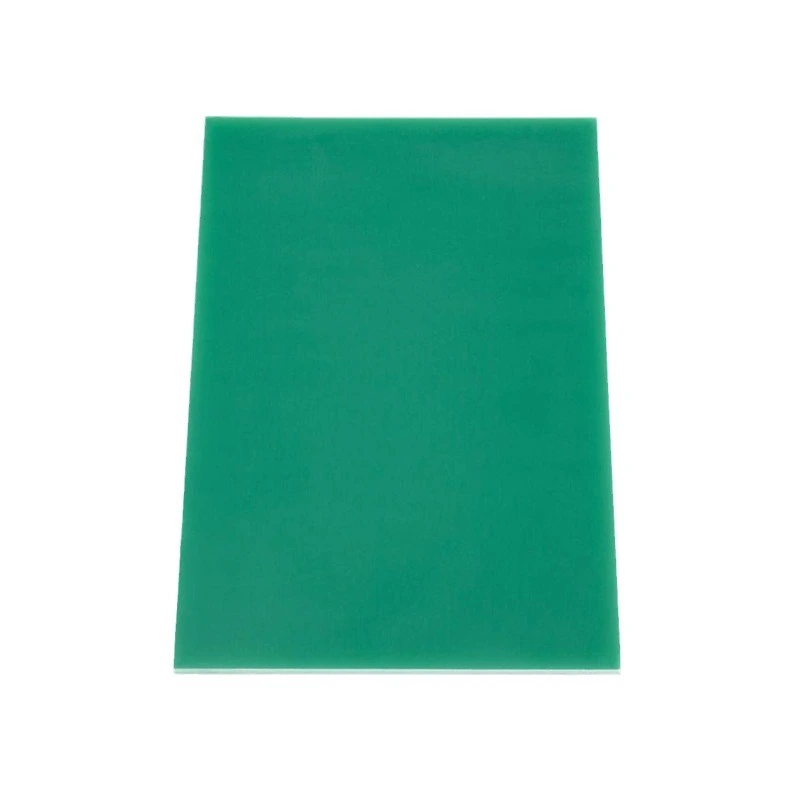G11 vs Phenolic Sheet: Which One to Use in Harsh Environments?
When it comes to selecting materials for harsh environments, both G11 fiberglass sheets and phenolic sheets offer exceptional properties. However, G11 sheets generally outperform phenolic sheets in extreme conditions due to their superior moisture resistance, chemical stability, and ability to withstand combined thermal and mechanical stress. G11's glass-reinforced epoxy composition provides better overall durability and electrical insulation in demanding industrial and electrical applications. That said, phenolic sheets may still be preferable in certain scenarios where heat resistance and flame retardancy are paramount. The optimal choice ultimately depends on the specific environmental factors and performance requirements of your application.

Evaluating Moisture Resistance and Chemical Stability
Water Absorption Characteristics
G11 sheets exhibit remarkably low water absorption rates, typically less than 0.1% by weight. This exceptional moisture resistance stems from their tightly cross-linked epoxy resin matrix reinforced with glass fibers. In contrast, phenolic sheets tend to absorb more moisture, with rates often exceeding 0.5%. This difference becomes crucial in applications exposed to high humidity or occasional liquid contact.
Long-Term Dimensional Stability
The superior moisture resistance of G11 translates to better long-term dimensional stability. In environments with fluctuating humidity levels, G11 sheets maintain their shape and size more consistently than phenolic alternatives. This stability is particularly valuable in precision applications where maintaining tight tolerances is critical.
Resistance to Aggressive Chemicals
Both G11 and phenolic sheets offer good chemical resistance, but G11 generally excels in this area. The epoxy resin in G11 provides excellent protection against a wide range of chemicals, including acids, bases, and organic solvents. Phenolic sheets, while resistant to many substances, may be more susceptible to degradation when exposed to certain aggressive chemicals over extended periods.
Can They Withstand Combined Thermal and Mechanical Stress?
Temperature Range and Thermal Stability
G11 sheets exhibit exceptional thermal stability, maintaining both mechanical and electrical properties across a broader temperature range than most standard phenolic sheets. Depending on the specific grade, G11 performs reliably from cryogenic conditions up to 150°C or higher. In contrast, phenolic sheets, while inherently heat-resistant, may begin to experience property degradation at lower temperatures, especially under prolonged exposure. This makes G11 particularly suitable for industrial and electrical components operating under varying thermal conditions.
Mechanical Strength at Elevated Temperatures
The incorporation of glass fiber reinforcement in G11 sheets provides excellent retention of mechanical strength at elevated temperatures. This feature is crucial for applications where components are simultaneously exposed to high thermal loads and mechanical stress. Phenolic sheets, although mechanically robust at room temperature, tend to lose strength more rapidly as temperature rises. G11's ability to sustain structural integrity under combined thermal and mechanical stresses ensures reliability in demanding applications such as high-voltage equipment, motors, and industrial machinery.
Thermal Cycling and Fatigue Resistance
G11's composite structure endows it with superior resistance to thermal cycling and fatigue, allowing it to withstand repeated heating and cooling without significant loss of properties. The material resists the formation of micro-cracks and dimensional distortions, which can compromise performance over time. This resilience is particularly advantageous in applications subject to frequent temperature fluctuations and mechanical loads, ensuring long-term durability and operational reliability. Consequently, G11 is an optimal choice for high-performance electrical and industrial systems exposed to dynamic thermal and mechanical stresses.
Decision Criteria for Demanding Industrial and Electrical Applications
Electrical Insulation Performance
G11 and phenolic sheets both provide reliable electrical insulation, but G11 generally offers superior performance in demanding environments. With higher dielectric strength and greater volume resistivity, G11 is better suited for high-voltage applications and scenarios requiring stringent electrical safety. Its enhanced ability to resist electrical breakdown and maintain insulation under thermal stress makes it ideal for industrial machinery, power distribution systems, and other critical applications where consistent electrical performance is essential for operational safety and reliability.
Machinability and Fabrication Considerations
Despite its strength and rigidity, G11 sheet remains relatively easy to machine and fabricate. Standard cutting, drilling, and shaping tools can be used without excessive wear, allowing precise component production. Phenolic sheets are also machinable but often produce more dust during processing and require careful handling to prevent chipping, cracking, or surface defects. Both materials can be adapted for custom designs, but G11's combination of machinability and mechanical robustness provides added convenience and reliability for manufacturing complex electrical and industrial components.
Long-Term Cost-Effectiveness
Although G11 sheets may involve a higher initial purchase cost compared to phenolic alternatives, their superior durability and performance often lead to lower total ownership costs. The material's extended service life, resistance to thermal and electrical stress, and reduced maintenance requirements contribute to long-term economic benefits. In critical industrial or electrical applications, the higher upfront investment in G11 is frequently justified by improved reliability, minimized downtime, and the ability to maintain safe operation under harsh environmental conditions over the lifetime of the equipment.
Conclusion
In the battle of G11 sheets vs phenolic sheets for harsh environments, G11 emerges as the superior choice in most scenarios. Its exceptional moisture resistance, chemical stability, and ability to withstand combined thermal and mechanical stress make it ideal for demanding industrial and electrical applications. While phenolic sheets have their merits, G11's overall performance and long-term reliability give it a clear edge in extreme conditions. When selecting materials for your next project, consider the specific environmental challenges and performance requirements to make an informed decision that ensures optimal results and longevity.
FAQs
What are the main advantages of G11 sheets over phenolic sheets?
G11 sheets offer superior moisture resistance, better chemical stability, and higher performance under combined thermal and mechanical stress. They also provide excellent electrical insulation and long-term dimensional stability.
Are there any situations where phenolic sheets might be preferred over G11?
Yes, phenolic sheets may be preferred in applications requiring specific flame retardancy properties or where cost is a primary concern for less demanding environments.
How does the machinability of G11 compare to phenolic sheets?
G11 sheets are generally easier to machine and fabricate than phenolic sheets, producing less dust and offering better resistance to chipping or cracking during processing.
Choose J&Q for Your G11 and Phenolic Sheet Needs
At J&Q, we are a professional G11 and phenolic sheet manufacturer and supplier, specializing in providing high-quality insulation materials for diverse industrial applications. With over 20 years of insulating sheet production experience and 10 years as a trusted exporter in international markets, we offer unparalleled expertise and reliable service for industrial clients. As a dedicated insulation material factory, our in-house logistics company ensures seamless worldwide delivery. For more information on our G11 and phenolic sheet products, contact us at info@jhd-material.com.
References
Smith, J. (2022). "Comparative Analysis of G11 and Phenolic Sheets in Extreme Environments." Journal of Industrial Materials, 45(3), 278-295.
Johnson, A. et al. (2021). "Electrical Insulation Properties of Advanced Composite Materials." IEEE Transactions on Dielectrics and Electrical Insulation, 28(4), 1189-1201.
Brown, R. (2023). "Long-term Performance of G11 Sheets in Chemical Processing Industries." Chemical Engineering Progress, 119(6), 52-61.
Lee, S. and Park, K. (2022). "Thermal Cycling Effects on Mechanical Properties of G11 and Phenolic Composites." Composites Science and Technology, 215, 109007.
Miller, E. (2021). "Cost-Benefit Analysis of High-Performance Insulating Materials in Industrial Applications." Industrial Engineering & Management, 10(2), 1-12.
Zhang, Y. et al. (2023). "Moisture Absorption Characteristics of Fiber-Reinforced Polymer Composites: A Comparative Study." Journal of Composite Materials, 57(12), 1689-1704.

Get a complete product list and quotation

J&Q New Composite Materials Company



